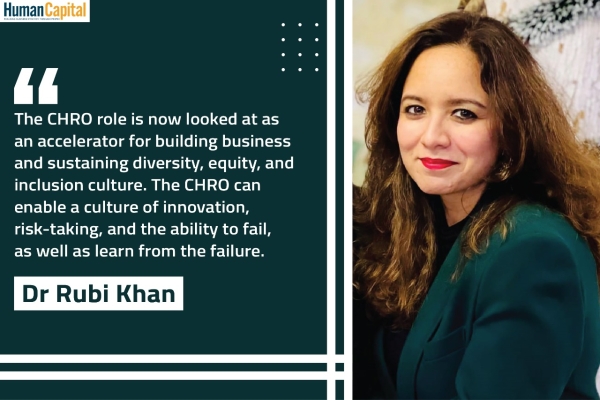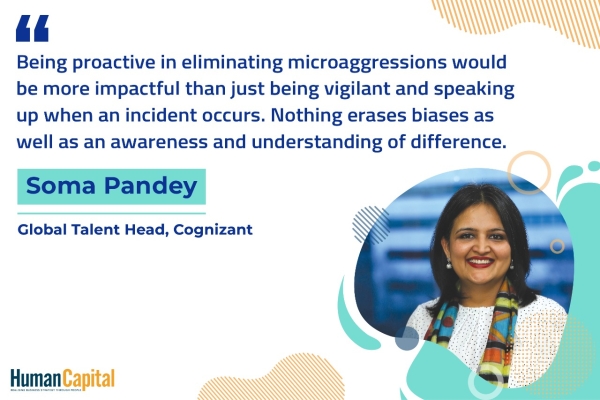
Becoming a Person of Integrity, Trustworthiness, and Conscientiousness
We all have a new set of yardsticks to match and excel in our new brave world.
Did Yudhishthira lie on the battlefield of Kurukshetra to decapitate his guru,Dronacharya, and win the war of dharma and righteousness unfairly? Did Rajat Gupta, ex-Managing Director of McKinsey, fail the test of conscientiousness in his interactions with Srilankan associate Raja Rajaratnam, a hedge fund owner? Did Chanda Kochhar, ex-CEO of ICICI Bank, violate the standards of morality and trustworthiness in dealing with matters related to NuPower-Videocon?
These questions, their multiple variations, and our answers to these questions define us in many ways. One may also ask if personal qualities like integrity, conscientiousness, and trustworthiness are relevant in an era of AI, IoT, and VR. Daniel Goleman, in his magnum opus “Working with Emotional Intelligence” (Bloomsbury, 2013), asserts in the affirmation that the rules for personal and professional effectiveness have changed. “We are being judged (today) by a new yardstick: not just by how smart we are, but also by how well we handle ourselves and each other. This yardstick is increasingly applied in choosing who will be hired and who will not, who will be let go and who retained, who passed over and who promoted.”
Goleman has listed 25 personal and social competencies which mark a “star performer”. We seek to understand some of them, including integrity, trustworthiness, and conscientiousness, herein.
Being Integrated
Integrity is a far more comprehensive concept than honesty and transparency. It is reflected in the practice of being undivided— integrated—in adherence to moral values. A person of integrity acts morally and in accordance with deeper human values even when no one is watching. When one’s action is driven by a code of righteous conduct, one generates acceptance and respect for one’s well-meaning behaviour
It’s no wonder that Goleman declares that credibility stems from integrity. People follow you when you are integrated, moral, and value-based.
Huberts (Routledge, 2018), in his interesting work on integrity, describes nine types of integrity violations:
1. Corruption: Bribing,
2. Corruption: Favouritism
3. Conflict of interest (through gifts, jobs, etc.)
4. Fraud and theft of resources
5. Waste and abuse of resources
6. Disregard for rules/misuse of power,
7. Misuse and manipulation of information
8. Indecent treatment (e.g., intimidation and discrimination), and
9. Private-time misconduct. When Yudhishthira mumbled,
(Ashwathama hatah iti naro va kunjaro va)”, he didn’t speak a lie. He was not dishonest when he spoke those words in a low-pitched voice, surrounded by the deafening sounds of conch cells. But his utterances violated ethical principles and values. One can’t prosecute him for lack of disclosure, yet he failed the “transparency test”. He rightly disclosed that the
Ashwathama was vanquished yet concealed that it was not the progeny of Guru Drona but the elephant Ashwathama. (Refer to item no. 7 above in Huberts’ taxonomy.)
Integrity is an act of integration, fullness, and completion. It is an act of renunciation of all nine manifested behaviours of Huberts’ taxonomy above.
Being Trustworthy
People with this competence, Goleman highlights, (i) act ethically and are above reproach, (ii) build trust through their reliability and authenticity, and (iii) admit their own mistakes and confront unethical actions in others.
One builds trust, researchers found, by engaging in a set of facilitating behaviours. Some of the behaviours involved in establishing a climate of trust are enumerated herein below:
1. Sharing: When one shares personal events, experiences, and feelings without trespassing into the world of privacy.
2. Vulnerability: Not projecting oneself as an all-knowing persona and letting other people notice your limitations, warts, and molls. If one is perceived as human, fallible, and thereby vulnerable, trust is generated.
3. Loyalty: Commitment to other person’s well-being, including goals of the organisation.
4. Accepting others: One may not agree with others but accepts/ respects another person’s perspective without necessarily concurring with other views.
5. Involving others: The other person may have some unique information. When you use others’ input in decision making, you build credibility.
6. Valuing others: One’s willingness to exchange ideas and ideals with others contributes to enhancing credibility.
7. Awareness: Being sensitive to others’ needs.
8. Communicating: When one communicates without inherent contradictions, one generates trust.
9. Openness: Willingness to explore new experiences adds to trustworthiness.
10. Honesty: Honesty is more than telling the truth. Yudhishthira did not tell a lie, but he didn’t avoid a deceitful statement.
Chanda Kochhar, looking back, failed to pass the test of these trustbuilding behaviours, particularly items 1, 3, and 10, and maybe many more. Like respect, you earn trust by becoming trustworthy first.
Being Conscientious
People with the competence of conscientiousness (i) meet their commitments and keep promises, (ii) hold themselves accountable for meeting their objectives, and (iii) are organised and careful in their work.
Conscientiousness is a foundation of success. People with this competence engage in “everyday signs of conscientiousness”. They are punctual. They are careful in doing even mundane work. They are scrupulous in attending their responsibilities, routine or vital. They follow the rules, help out, and care for their co-workers. Contrast all these signs with Rajat Gupta’s confession in his memoir “Mind without Fear” (Juggernaut, 2019).
◆ “I was a human being guilty of nothing more than an all too human misjudgement of human character.” (Page xiii) This statement was a part of his selfdefence.
◆ “I was jailed for alleged personal gain, for a fabricated white-collar crime, and, at most, a careless mistake.” (Page 11)
◆ “I should have never mentioned the board meeting.” (Page 46)
◆ “Looking back, I was naïve, to say the least.” (Page 53)
Rajat Gupta didn’t engage in insider trading with his friend Raj Rajaratnam, yet he was naive and indiscreet in sharing classified information. One must, however, acknowledge that Rajat Gupta had the courage to accept that he had a chink in his armory (refer to his list of four confessions above), unfortunately long after the moral battle was lost.
In fact, Rajat Gupta, undoubtedly a vulnerable hero like Yudhishthira, proves the point that we all have a new set of yardsticks (i.e., competencies) to match and excel in our new brave world.
Integrity, trustworthiness, and conscientiousness are overlapping values. Becoming a person of these competencies requires courage to delay immediate gratifications for long-term goodness in and around us. Such individuals will be needed and venerated in the age of AI and IoT. Why and how? Because technology and ‘things’ depend on them to make tomorrow a lot wiser and more humane.
References
Ganguli, K M, The Mahabharata, Book 7 Drona Parva, sacred-t exts.com, October 2003.
Goleman, Daniel, Working with Emotional Intelligence, Bloomsbury, 2013.
Huberts, LWJC, Integrity: What it is and why it is important, Public Integrity, Routledge 2018.
Rajat Gupta, Mind Without Fear, Juggernaut, 2019.
Do you look forward to permanently working from home after the pandemic subsides?
Trending
-
SBI General Insurance Launches Digital Health Campaign
-
CredR Rolls Out 'Life Happens' Leave For Its Employees
-
Meesho Announces 30-Week Gender-Neutral Parental Leave Policy
-
Microsoft Unveils Tech Resilience Curriculum To Foster An Inclusive Future
-
60% Indian Professionals Looking For Job Change Due To COVID: Survey
-
SpringPeople And Siemens Collaborate For Digital Transformation Push
-
86% Professionals Believe Hybrid Work Is Essential For Work Life Balance: Report
-
Almost 1 In Every 3 People's Personal Life Affected Due To Work Stress
-
Meesho Rolls Out Reset And Recharge Policy For Employees
-
80% Of Talent Leaders & Academics Say Pandemic Changed Skill Needs For Youth: Report
-
Hero Electric Rolls Out 'Hero Care' Program For Employees
-
Human Capital In Collaboration With ASSOCHAM Hosts Virtual Conference
-
IKEA India, Tata STRIVE Collaborate To Create Employability And Entrepreneurship Opportunities
-
SAP India, Microsoft Launch Tech Skilling Program for Young Women
-
DXC Technology, NASSCOM Collaborate For Employability Skills Program
-
Lenskart To Hire Over 2000 Employees Across India By 2022
-
Mindtree Launches Learn-and-Earn Program
-
Tata AIA Extends 'Raksha Ka Teeka' To Its Employees
-
Swadesh Behera Is The New CPO Of Titan
-
NetConnect Global Plans To Recruit 5000 Tech Professionals In India
-
Hubhopper Plans To Hire 60% Of Indian Podcasters By 2022
-
Corporate India Needs More Women In Leadership Roles: Report
-
Aon to Invest $30 Million and Create 10,000 Apprenticeships by 2030
-
Tech Mahindra Launches ‘Gift a Career’ Initiative for Upskilling of Youth
-
40% Women Prefer Flexible Working Options in Post-COVID World: Survey
-
3 out of 4 companies believe they can effectively hire employees virtually: Report
-
Vodafone , CGI and NASSCOM Foundation launch digital skills platform
-
Odisha: Bank, postal employees to deliver cash for elderly, differently-abled persons
-
Skill India launches AI-based digital platform for "Skilled Workforce"
-
Hiring activity declines 6.73% in first quarter: Survey
-
70% startups impacted by COVID-19 pandemic
-
Bajaj Allianz Life ropes in Santanu Banerjee as CHRO
-
Over 70 Percent MSMEs look at cutting jobs to sustain businesses
-
93 Per Cent employees stressed about returning to office post-lockdown
-
Johnson & Johnson India announces family benefits for same gender partners
-
Indian firms turning friendly towards working mothers
-
Welspun India names Rajendra Mehta as new CHRO
-
Wipro partners with NASSCOM to launch Future Skills platform



Human Capital is niche media organisation for HR and Corporate. Our aim is to create an outstanding user experience for all our clients, readers, employers and employees through inspiring, industry-leading content pieces in the form of case studies, analysis, expert reports, authored articles and blogs. We cover topics such as talent acquisition, learning and development, diversity and inclusion, leadership, compensation, recruitment and many more.
Subscribe Now












































Comment